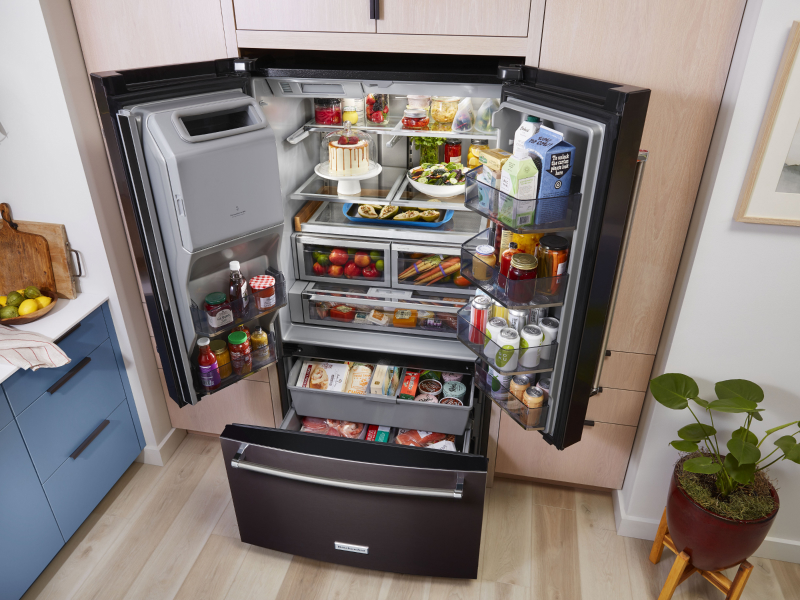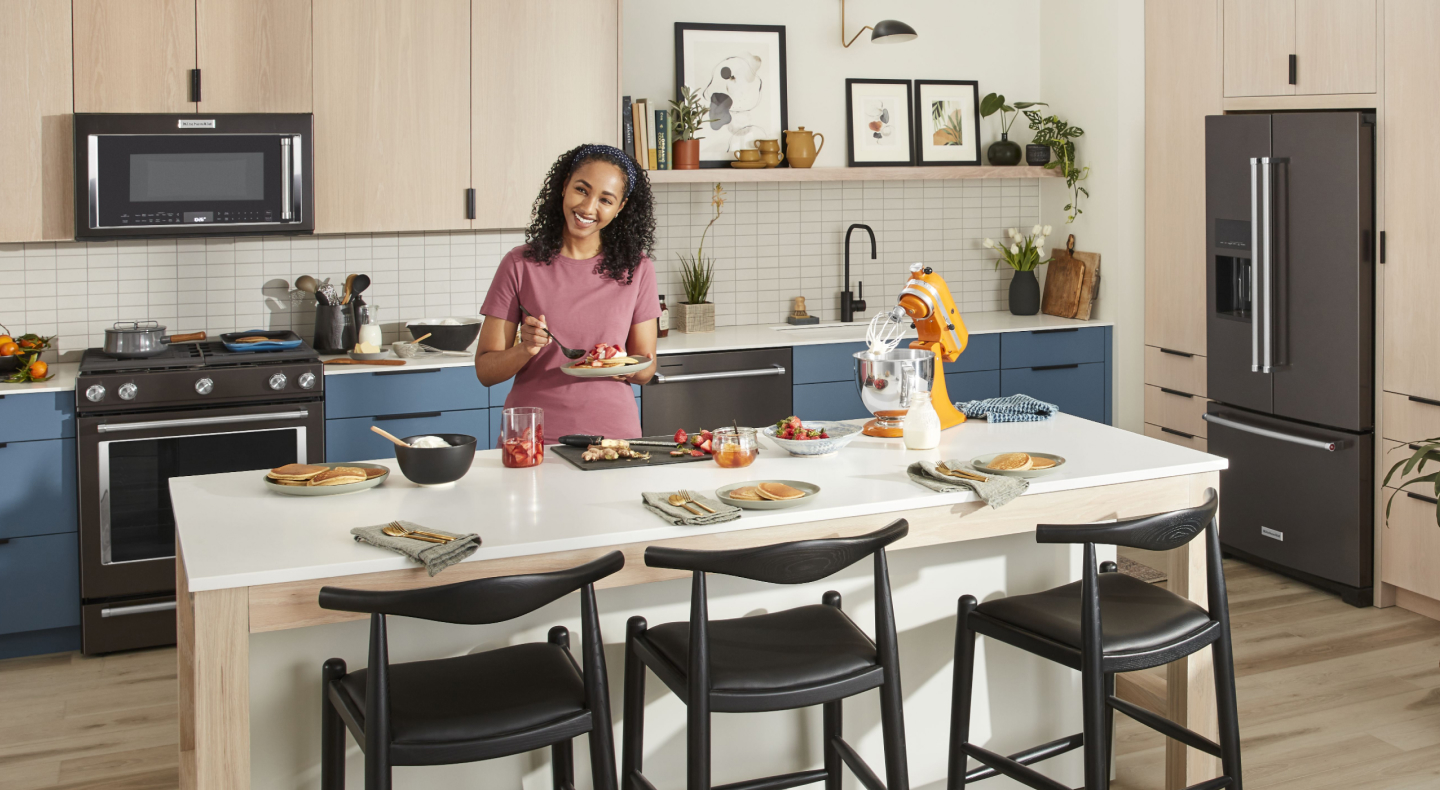
How do refrigerators work? A complete guide
Modern refrigerators—introduced in 1918—use compressors to prepare and propel refrigerant through a closed system that helps keep the compartment and your food cool. Read this guide to learn how your refrigerator and freezer operate, as well as what components power it.


What does a refrigerator do?
Refrigerators pass refrigerant through various mechanisms to help transfer heat from the inside of the appliance to the outside, cooling the compartment. Refrigerant absorbs heat inside the refrigerator and carries it away to help keep the contents inside cold.
How does the refrigeration cycle work?
Refrigerators pass refrigerant through a compressor, condenser coils, an expansion device and evaporator coils, transforming refrigerant’s chemical composition to cool the refrigerator compartment. See the five steps of the refrigeration cycle below to learn more about the process.
1. Compressor prepares refrigerant
Your refrigerator’s cooling process originates with its compressor; a device that prepares and begins pumping refrigerant through the unit. The compressor draws vapor refrigerant in, then compresses it to increase its temperature and pressure before pushing it through the condenser coils.
2. Condenser coils release heat
Hot, pressurized refrigerant moves from the compressor and into the condenser coils on the outside of the refrigerator. These coils, along with the relatively cool air outside of the refrigerator, convert vaporized refrigerant into liquid. Heat from the refrigerant is released into the atmosphere, and the refrigerant cools, working its way through the condenser coils and onto the expansion device.
3. Expansion device lowers pressure
The expansion device is the last stop for refrigerant before it enters the evaporator coils to chill the food inside. Cooled refrigerant passes through the expansion device where pressure is significantly decreased. The lower pressure expands the refrigerant, transforming it back into a gas and passing it onto the final step of the process.
4. Evaporator coils absorb heat
Chilled, vaporized refrigerant travels through the evaporator coils absorbing heat from the refrigerator compartment. The evaporator coils absorb and release heat from the refrigerant throughout the process, leaving the refrigerator compartment chilled and ready to help keep food fresh. Refrigerator freezer combinations use a series of vents to pass cold air between the freezer and refrigerator compartments.
5. Refrigerant returns to compressor
Now back at the compressor, the vaporized refrigerant is turned back into a liquid to repeat the cycle again. This closed system of refrigerant compression and expansion continues to help your refrigerator and freezer maintain set temperatures.
What are a refrigerator’s main components?
Refrigerators rely on a closed system consisting of a compressor, condenser coils, expansion device and evaporator coils to circulate refrigerant, but plenty of other components go into a fully functional appliance. Refrigerator parts like the thermistor, evaporator and condenser fans, water filter and inlet valves and more help keep your refrigerator running smoothly.
What gas is used in refrigerators?
Refrigerant gas plays a pivotal role in keeping a refrigerator cold, but the contents of common refrigerants have evolved over the years. Today’s refrigerants are most commonly hydrofluoroolefins (HFOs), a combination of hydrogen, fluoride and carbon.
What happens when a refrigerator runs out of gas?
Refrigerators use gas—known as refrigerant—to cool the refrigerator and freezer compartments, but you should never need to refill refrigerant. Refrigerant works its way through a closed system of refrigerator mechanisms as it cools, recycling through the system continually to keep food cold. Refrigerators don't typically run out of refrigerant unless there’s a leak.
What could cause a refrigerator to stop getting cold?
A refrigerator that won’t maintain cold temperatures can have a variety of possible causes. Broken gasket seals that leak cold air, poor organization or improper refrigerator clearance can all interfere with proper cooling.
Your refrigerator may also struggle to cool if the condenser coils are dirty or the condenser fan is broken down or stuck. A refrigerator’s circuit board can malfunction in more serious cases, leading to impairments in everything from cooling to lighting and component operation. If you are unable to troubleshoot your refrigerator issues on your own, contact a professional to help diagnose the problem.
How does a freezer work?
Like refrigerators, freezers expand and compress refrigerant as it circulates through a closed system made up of a compressor, condenser coils, capillary tube and evaporator coils.
Standalone freezers dedicate the system solely to achieving freezing temperatures, while refrigerator freezer combinations vent cold air between the refrigerator and freezer compartments to achieve pre-set temperatures.
Shop KitchenAid® refrigerators
KitchenAid® refrigerators help you keep ingredients at peak freshness so you can create with confidence. Select models feature the Preserva® Food Care System that provides two independent cooling systems—one for refrigeration and one for the freezer. The ExtendFresh™ Plus Temperature Management System on some models helps keep food ready to use with sensors that adjust temperatures in the refrigerator and freezer by monitoring airflow between them.






